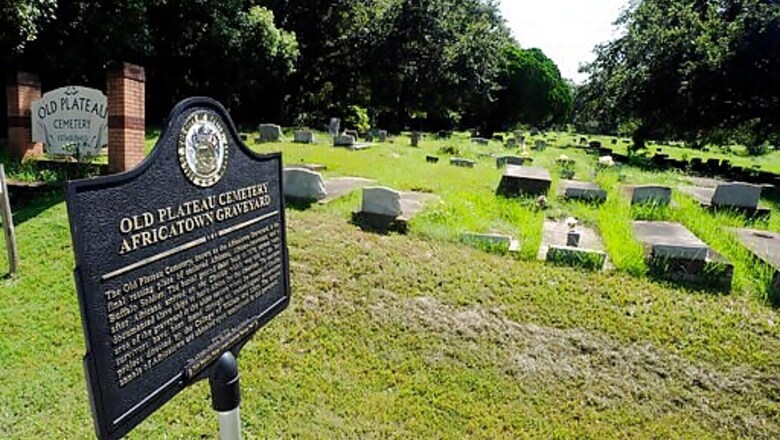
views
MONTGOMERY, Ala. Alabama is moving ahead with work to study and remove artifacts from the submerged wreckage of the Clotilda, the last slave ship known to land in the United States.
The Alabama Historical Commission released a request Tuesday seeking a contractor to provide divers who can assess and document the remains of the Clotilda, located near Mobile. Teams should be able to remove artifacts and test remains of the two-masted wooden schooner, the agency said.
Sonar images released by the agency last month showed the vessel lying on a river bottom crisscrossed with what appear to be a few timbers or fallen trees. Work could include collecting wood, DNA sampling and assessing the possibility of installing a monument at the site, the document said.
In 1860, before the Civil War, the ship sailed to West Africa on an illegal trip financed by a wealthy white businessman, Timothy Meaher. The ship delivered about 110 kidnapped Africans to Mobile on the Gulf Coast before the vessel was burned in a bayou to hide evidence of the crime.
Search teams located a wreck beside an island and announced in 2019 that it had been identified as the Clotilda. A federal court granted the state ownership of the wreck, allowing work to proceed.
The state last month said it would spend $1 million to preserve the remnants of the Clotilda. An exhibit with items from the ship is scheduled to open later this year in Mobile.
Africans who were brought to Alabama aboard the ship were freed after the war and settled in Africatown, an area where some of their descendants still live a few miles (kilometers) from the main port of Mobile.
Disclaimer: This post has been auto-published from an agency feed without any modifications to the text and has not been reviewed by an editor




















Comments
0 comment